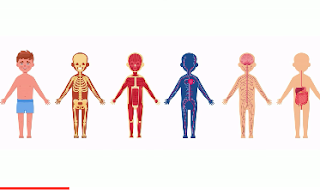All living creatures are made up of cells. In plants,animals,fungi, and protists, there are two major categories of cells: somatic cells and reproductive cells, known as gametes. In humans and other animals, the gametes are the egg and sperm cells. All other cells in the body are somatic cells. Think of every body part you have; they are all made of somatic cells. The word 'somatic' is derived from the Greek word, 'soma', meaning body.
Somatic cells come in a huge variety.
There are over 200 types of somatic cells with different functions such as bone, muscle, and nerve cells. Somatic cell types can have different structures and functions, depending on where they are located in the body.
There are over 200 types of somatic cells with different functions such as bone, muscle, and nerve cells. Somatic cell types can have different structures and functions, depending on where they are located in the body.
For example, Bone cells are mainly categorized into two groups: osteoblasts and osteoclasts. Osteoblasts are small cuboidal cells that produce proteins that promote bone growth and Osteoclasts are larger and dissolve old bone structures.
Muscle cells can be of three different types: smooth, cardiac, and skeletal muscles.
Smooth muscle cells help with internal movement like in your intestines.
Cardiac muscle is only found in the heart and is responsible for the pumping of blood to other organs.and skeletal muscles are found attached to bones and aid in body movement.
Smooth muscle cells help with internal movement like in your intestines.
Cardiac muscle is only found in the heart and is responsible for the pumping of blood to other organs.and skeletal muscles are found attached to bones and aid in body movement.
Nerve cells, or neurons, have a very distinct shape and are composed of axons, dendrites, and soma. Nerve cells are found throughout your body and prominently in the brain and spinal cord, where they send or receive chemical and electrical signals to regulate various activities such as body movement.






0 comments:
Post a Comment